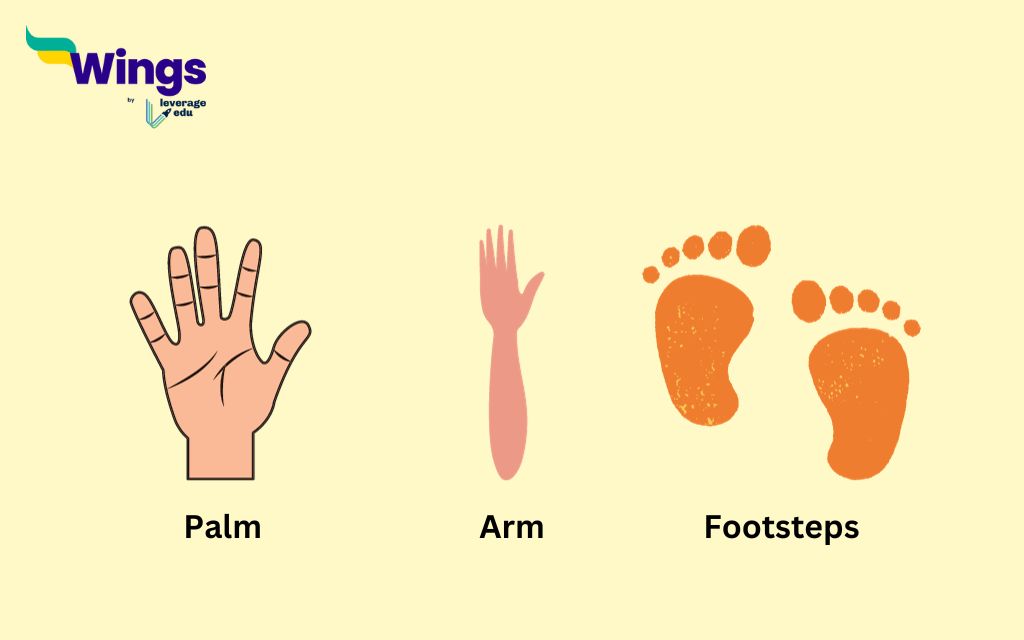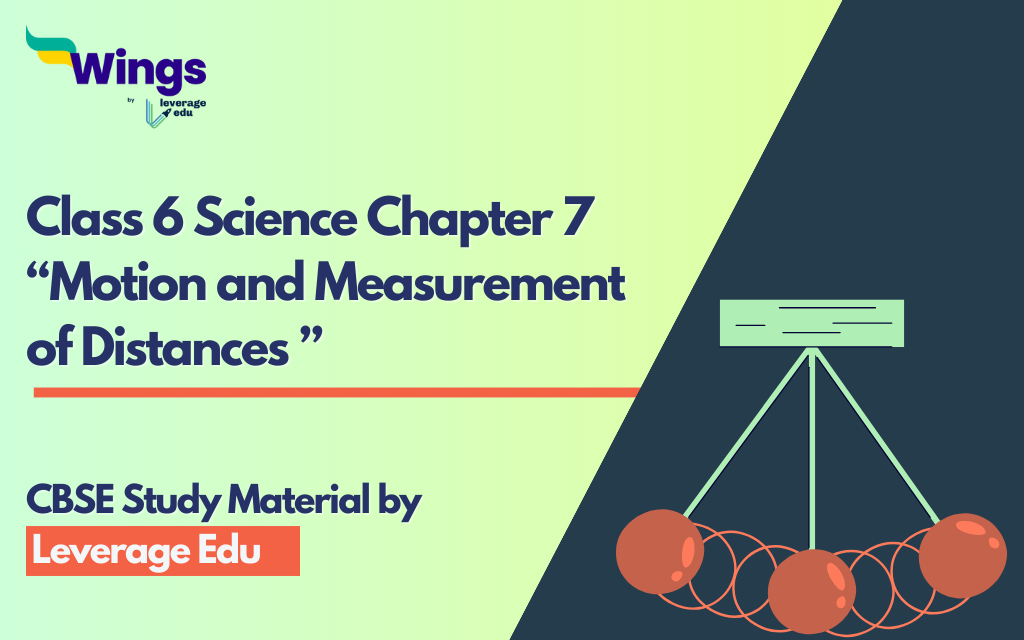NCERT Class 6 Science Chapter 7 Notes explain the concept of motion and its types. While learning about motion, we get to dive into different modes of transportation and their brief history. Further, the notes also simplify the standard and non-standard measurement methods and units. Thereafter, we have provided accurate methods and units of measurement and errors in length measurement. Additionally, to help you excel in your tests we have solved all questions included in the exercise of ‘CBSE Class 6 Science Chapter 7- Motion and Measurement of Distances’.
Contents
Explore all the Chapters of Class 6 Science:-
Also Read: Branches of Science
Summary of NCERT Class 6 Science Chapter 7
CBSE Class 6 Science Chapter 7 starts by explaining the concept of motion. Then it dives into three types of motion- Rectilinear, Periodic, and Circular. After that, you get to know about modes of transportation. Also, we learn about Length and Distance. Furthermore, we learn about the SI unit of length, its symbols, and its conversion. Thereafter, we explore different errors and how to measure them accurately. Moreover, this chapter also introduces the concept of time.
Motion and Measurement of Distances Class 6 Notes
Let us now learn all these concepts of motion and distance measurement included in NCERT Class 6 Science Chapter 7!
Introduction to Motion
When an object shifts in relation to time, it is said to be in motion. On the other hand, when an object does not move with respect to time, it is said to be in a state of rest.
Types of Motion
Here are the different types of motion:
- Rectilinear motion: When an object moves along a straight line, it is termed rectilinear motion. For instance, an athlete is running on a 100-meter track and a metal screw falls from a cliff or a building.
- Periodic motion: When an entity is moving from one fixed point to another or to and fro from a constant point, it is known as periodic motion. For instance, planets move around the sun and a clock pendulum.
- Circular motion: When a body moves along a circular line or path, it is termed circular motion. For instance, merry-go-round in a children’s park and moon revolving around the Earth.
Also Read: Branches of Physics and Definitions
Modes of Transport
Since time immemorial, humans have created various modes of transportation to get from one place to another. Over the centuries, they have invented new modes of transportation for their comfort and convenience. Here is a brief history of the evolution of means of transportation:
- To cross bodies of water, they created boats with shapes inspired by aquatic animals.
- They created the wheel, which inspired the development of carts and other forms of animal-powered transportation.
- Humans created the steam engine at the start of the 19th century and then came the automobile and other motorised vehicles.
- Later on, humans invented aeroplanes to reach far-off places in less time. Thereafter, other means of air transportation like helicopters, space shuttles, etc. were developed.
Length and Distance
- Length: It is the measurement of any object from one end to the other.
- Distance: It is the gap between two points. Or, we can also say distance is the measurement of how far is a place from point A to point B.
Non-Standard Methods of Measurement
Initially, humans used footsteps, fingers, arms, and palms to measure the length of different objects. As each person has a different size of arm, leg, palm, and finger, the measurement of an object varies from individual to individual. Because of this difference, these methods are known as non-standard measurement methods.

Also Read: Do you Think You Know All About Physics? Then Take this Fun Quiz!
Standard Units of Measurement
Any measurement that is the same all across the globe is called Standard Measurement. The International system of units was approved by the 12th General Conference on Weights and Measures in October 1960. The system of units known as “The System International (SI) Units” is used to keep measurements consistent over the globe.
- SI Unit of Length: Metre is the SI unit of length. Its symbol is ‘m’. It is divided into 100 parts equally. Each part of these 100 divisions is known as a Centimetre. Its symbol is ‘cm’. Further, cm is made of 10 equal parts, known as Millimetre. Its symbol is ‘mm’. Whereas, for measuring large distances, we use a Kilometer. Its symbol is ‘km’.
Use this table for conversion from one unit of length to another:
| 1 m = 100 cm and 1 cm = 10 mm, Therefore 1 m = 1000 mm |
| 1 decametre = 10 m |
| 1 hectometre = 100 m |
| 1 km = 1000 m |
- Accurate Length Measurement and Zero Error
- The object being measured must make contact with the scale.
- A zero inaccuracy could result from damaged scales or a hidden zero mark. Then it is necessary to measure starting from a different mark.
- In order to get the right reading, remove the value from the full mark that is treated as zero.
- To prevent parallax errors, the eye must be directly above the intended measurement point when taking the measurement.
- Parallax Error
When an object is seen from two separate points of view, its apparent position will move or vary, which is known as parallax. A parallax error is the term used to describe this kind of measurement inaccuracy.
Measurement of Curved Line
As a curved line cannot be measured with a scale, we have to use a thread or a string. Here is how we can measure a curved line:
- By tying a knot at one end of a string or thread and maintaining it at the beginning, one can trace a curved line to measure it.
- Then, using a metre scale, this length (thread or string) can be extended and measured.
- The lengths of curved objects can be determined using a measuring tape. For instance, the size of a snake’s tail.
Time
It is the measure of how long anything takes to complete. Distance is calculated in relation to time. The distance traveled over a time period of ‘t’ if an object is moving at a speed of is equal to’s * t’.
| Distance = Speed (s) * Time (t) |
Also Read: Basic Physics Formulas & Notes
Download NCERT Science Class 6 Science Chapter 7 Important Questions and Answers PDF
Explore all the Chapters of Class 6 Science:-
Important Questions and Answers in NCERT Class 6 Science Chapter 7
Now that we are thoroughly familiar with important concepts of motion and length measurement, let us solve important questions in NCERT Class 6 Science Chapter 7.
Ques 1: List two examples of the modes of transport used on
- Air
- Land
- Water
Ans:
- Air- Aeroplane and Helicopter
- Land- Train and Car
- Water- Boat and Ship
Ques 2: Fill up the blanks:
- 1 metre equals ________________ cm.
- 5 kilometer equals______________ m.
- A child is swinging. This motion is called_______________.
- Motion of a needle in a sewing machine is_______________.
- The wheel of a cycle is in motion. This is called_____________.
Ans:
- 100
- 5000
- Periodic
- Periodic
- Circular
Ques 3: Why footsteps cannot be used as a length measurement method?
Ans: It cannot be used as a standard length measurement unit or method as it is not constant. The length of the footstep is different for each person.
Ques 4: Arrange the following length measurement units in ascending order:
1 metre (m), 1 milimetre (mm), 1 centimetre (cm), 1 kilometre (km)
Ans: 1 mm<1 cm<1m<1 km
Ques 5: A person is of 1.65 m. Convert and write it into cm and mm.
Ans: 1.65 m equals 165 cm, which equals 1650 mm.
Ques 6: Radha’s school and home are 3250 m apart. Convert and write it into km.
Ans: As 1 kilometre equals 1000 m. Therefore, 3250 m equals 3.25 km.
Ques 7: The reading of the scale at one end is 33.1 cm and on the other end is 3.0 cm. What do you think is the needle’s length?
Ans: The needle’s length is 30.1 cm (33.1 cm-3cm)
Ques 8: What are the similarities and distinctions between the motion of a moving ceiling fan and a bicycle?
Ans: Similarity- Both the wheel of a bicycle and the fan move in a circular motion.
Difference- The wheels of a bicycle move in rectilinear motion. Whereas, the fan does not show rectilinear motion.
Ques 9: Why wouldn’t you prefer to measure distance with a measuring tape made of an elastic substance like rubber? What challenges would you encounter when describing a distance you measured with such a tape to someone?
Ans: An elastic measuring tape won’t provide accurate measures because it extends and contracts in size. It is necessary to indicate whether the elastic tape was stretched when expressing measurements taken with it. If so, by how much? Therefore, it is quite challenging to determine the measurement obtained from an elastic tape.
Ques 10: Provide two examples of periodic motion.
Ans: Here are two examples of periodic motion:
- Pendulum
- Needle of a sewing machine
Also Read:
NCERT Class 6 Science Chapter 1 Notes: Components of Food
NCERT Class 6 Science Chapter 2 Notes: Sorting Materials into Groups
NCERT Class 6 Science Chapter 3 Notes: Separation of Substances
NCERT Class 6 Science Chapter 4 Notes: Getting to Know Plants
NCERT Class 6 Science Chapter 5 Notes: Body Movements
NCERT Class 6 Science Chapter 6 Notes: The Living Organisms: Characteristics and Habitats
Explore Notes of All subjects of CBSE Class 6:-
| CBSE NCERT Notes Class 6 English | CBSE NCERT Notes Class 6 History | CBSE NCERT Notes Class 6 Geography |
| CBSE NCERTNotes Class 6 Civics | CBSE NCERT Notes Class 6 Mathematics |
FAQs
Ans: Length measurement using footsteps, fingers, palms, and arms is known as traditional or non-standard length measurement. These are inaccurate measurements.
Ans: The SI unit of length is Metre. Its symbol is ‘m’.
Ans: When an object is seen from two separate points of view, its apparent position will move or vary, which is known as parallax. A parallax error is the term used to describe this kind of measurement inaccuracy.
Follow Leverage Edu for complete study material on CBSE Notes of Class 6 Science.
 One app for all your study abroad needs
One app for all your study abroad needs














